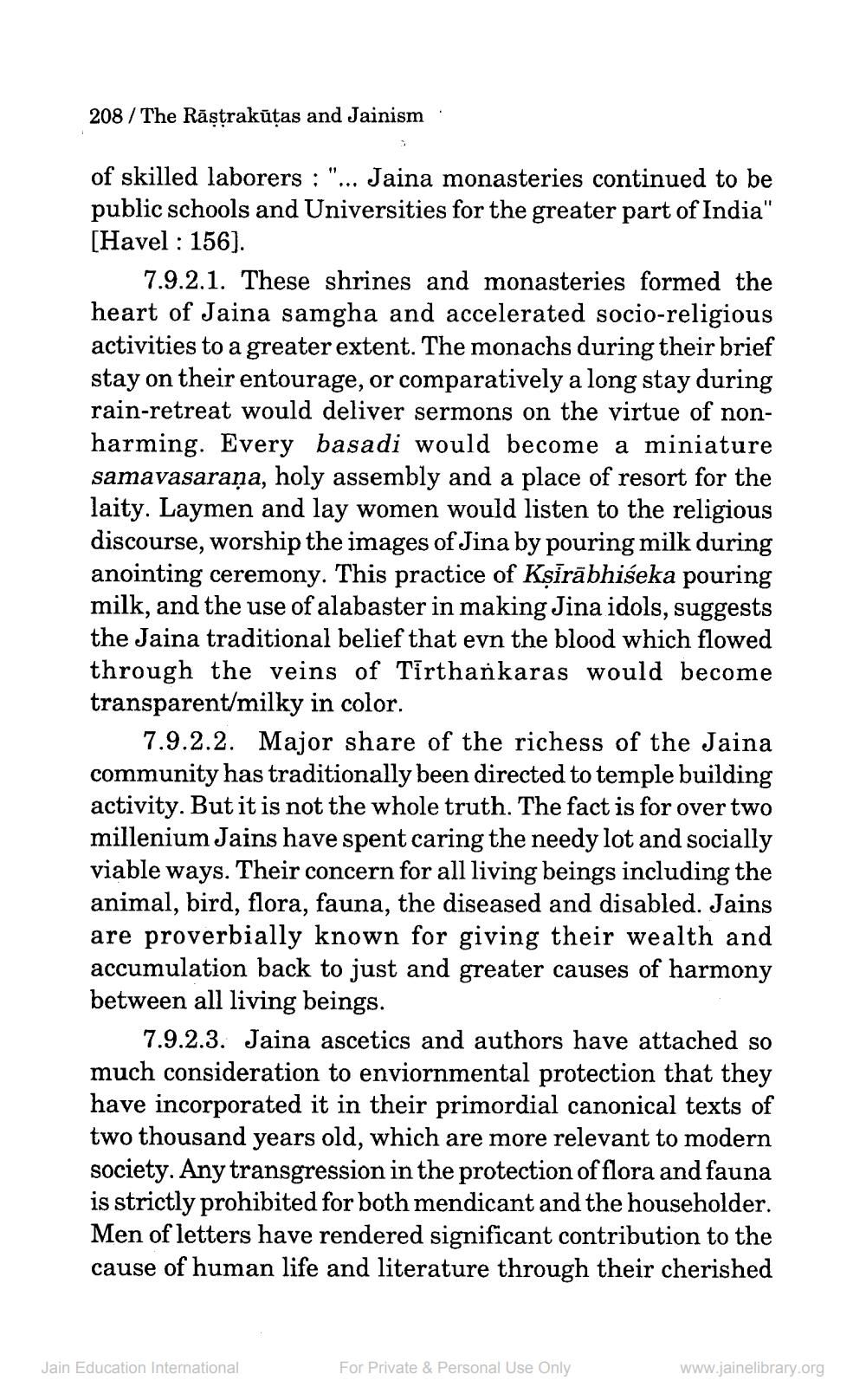________________
208 / The Rāştrakūtas and Jainism
of skilled laborers ; "... Jaina monasteries continued to be public schools and Universities for the greater part of India" [Havel : 156).
7.9.2.1. These shrines and monasteries formed the heart of Jaina samgha and accelerated socio-religious activities to a greater extent. The monachs during their brief stay on their entourage, or comparatively a long stay during rain-retreat would deliver sermons on the virtue of nonharming. Every basadi would become a miniature samavasaraņa, holy assembly and a place of resort for the laity. Laymen and lay women would listen to the religious discourse, worship the images of Jina by pouring milk during anointing ceremony. This practice of Kșirābhiseka pouring milk, and the use of alabaster in making Jina idols, suggests the Jaina traditional belief that evn the blood which flowed through the veins of Tirthankaras would become transparent/milky in color.
7.9.2.2. Major share of the richess of the Jaina community has traditionally been directed to temple building activity. But it is not the whole truth. The fact is for over two millenium Jains have spent caring the needy lot and socially viable ways. Their concern for all living beings including the animal, bird, flora, fauna, the diseased and disabled. Jains are proverbially known for giving their wealth and accumulation back to just and greater causes of harmony between all living beings.
7.9.2.3. Jaina ascetics and authors have attached so much consideration to enviornmental protection that they have incorporated it in their primordial canonical texts of two thousand years old, which are more relevant to modern society. Any transgression in the protection of flora and fauna is strictly prohibited for both mendicant and the householder. Men of letters have rendered significant contribution to the cause of human life and literature through their cherished
Jain Education International
For Private & Personal Use Only
www.jainelibrary.org




